Recent News
Protecting the island's rarest speciesFriday, July 05, 2013
Mark Outerbridge has been charged with no minor task. As Conservation Service’s new Wildlife Ecologist he is responsible for ensuring that Bermuda’s rarest and most endangered species are not wiped out in the sands of time.
Baby dolphin photographed off North Shore
Wednesday, June 26, 2013
Boaters off the North Shore had a rare opportunity to witness passing Atlantic bottlenose dolphins.
Two Dolphins Spotted Inshore Off North Shore
Tuesday, June 25, 2013
A pair of Atlantic Bottlenose Dolphins were spotted inshore yesterday [June 24] off the North Shore, and the Department of Conservation said it is “highly unusual” for them to be close to shore and in such small numbers.
The Sea Dragon Trip
Friday, June 07, 2013
My name is Choy Aming and I am an aquarist at the Bermuda Aquarium, Museum and Zoo. I was recently sent out on a collecting assignment in the Sargasso Sea on the research vessel Sea Dragon.
Bermuda Skinks heading for a UK ‘lifeboat’
Friday, June 07, 2013
The fight to protect the critically endangered Bermuda Skink has found a new ally — the UK’s Chester Zoo
About
GovernanceAbout Us
Newsletter
Latest News
Gift & Bookstore
Contact
General Inquiries
info@bzs.bm
Latest News
All the latest updates and news from the Bermuda Aquarium, Museum, and Zoo, one of Bermuda's leading visitor attractions!
Whale researcher Andrew Stevenson has started work on a follow-up to his acclaimed documentary ‘Where the Whales Sing’ – which for the first time will include unique aerial footage.
Mr Stevenson also believes that he now has one of the largest databases in the world held by just one person from which he can make scientific conclusions about threats posed to whales, such as global warming.
And when it was revealed – following the recent sighting of a whale entangled in fishing gear – that there was a lack of equipment in Bermuda to assist in situations of that nature, Mr Stevenson is buying the equipment himself and will go to Canada for the necessary training.
“I’m in the process of making my second documentary film, a follow-up to my previous documentary which came out in 2010. I have another eight years of underwater footage and three seasons now of aerial footage,” said Mr Stevenson, who is giving a lecture on at the BUEI on May 14 at 6.30pm and at 8.30pm when he will show some of the aerial footage and reveal details of his latest research.
“The aerial footage is a complete game-changer for me. Before I had to guess what the whales were doing whilst observing them from my boat. I would see a blow, a swish of a tail, and not a lot more. Underwater I would only be able to observe them if they came to me and remained with me.
“With an ultra-high definition drone, I look down on the whales and record see every little bit of their interaction. I don’t have to be anywhere near them and I can follow them for great distances.
“Examining the footage on my large, curved 4k screen at home, I can see incredible detail. I can make a very good guess at which whales are males, I can easily recognize a calf, a yearling or a juvenile. I can tell the health of the animals by their girth and the vertebrae.”
He said the aerial footage had helped him answer some questions about the whales’ behaviour such as detailed social interactions amongst the whales.
“But the more I learn, the more I realize I don’t know anything about the humpbacks. What is very clear is that they are highly complex social animals and you must see the aerial video to understand what I mean. What is interesting is that they seem to maintain fidelity not only to a mid-ocean migratory route, but they also seem to maintain fidelity to a fixed timetable.”
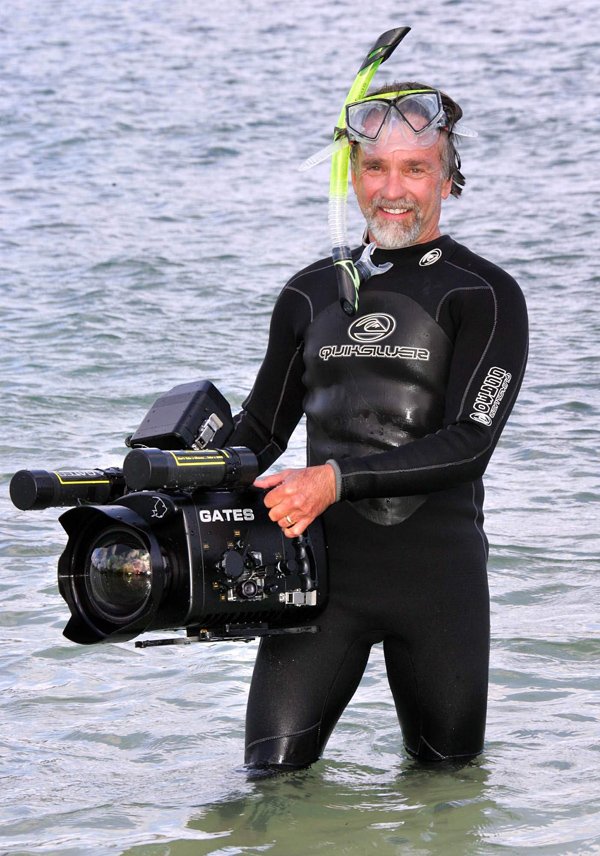
Mr Stevenson said the new documentary, which has been supported by the Atlantic Conservation Partnership with additional funding from the Government of Bermuda and individual donors, was not just about humpback whales.
“It’s all about Bermuda’s greatest asset, the ocean all around us,” he said.
“I highlight Bermuda’s unique location in the middle of the ocean. By following the iconic and charismatic humpbacks as our leading characters I showcase our ocean and the problems it faces and how we have to protect it.”
Mr Stevenson, who has a research permit issued by the Department of Environment and Natural Resources, Ministry of Environment and a commercial small unmanned aircraft [drone] license issued by the Bermuda Civil Aviation Authority has recently dropped two hydrophones in 150ft of water off Sally Tuckers and Challenger Bank to recording humpback whales as well as dolphins and other beaked whales.
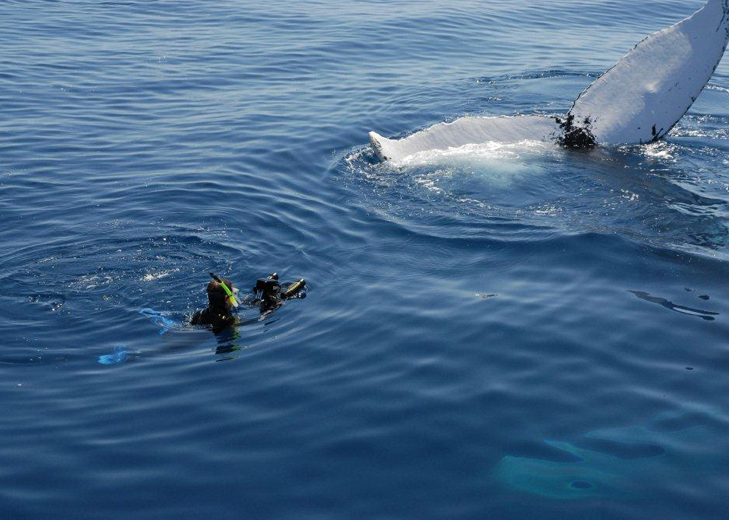
“I gave three presentations at the biennial conference of the Society for Marine Mammology in Halifax last October and while there met the CEO of Jasco Applied Sciences. We formed a partnership to drop two hydrophones off Bermuda,” he said.
“They are recording at the frequency of humpback whale song 29 minutes of every hour for the next 165 days. We are also dedicating one minute per hour to listen on the frequency of dolphins and other beaked whales.”
In addition to the recordings, Mr Stevenson now has a database of more than 1,500 photographed and identified humpback whales taken over the last 12 years which, he says, is becoming scientifically rigorous.
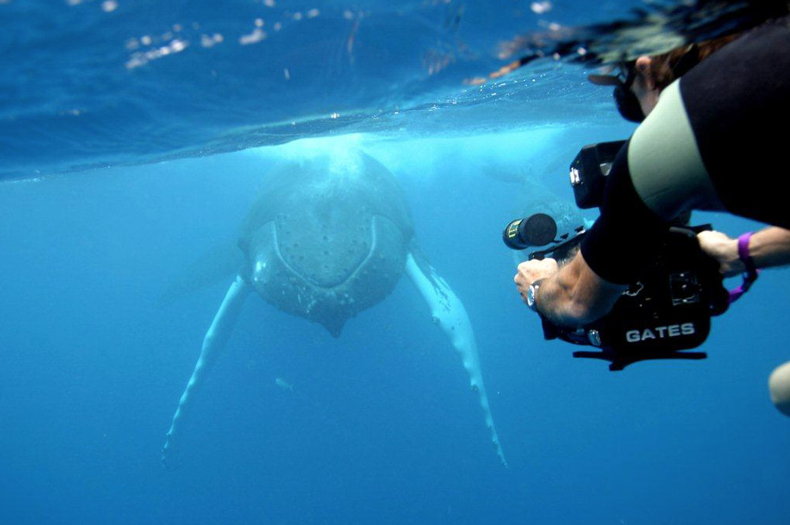
“This is one of the largest databases of fluke IDs from one place in the world held by anyone. What makes this truly unique is that it is the only database achieved in the middle of the ocean in the middle of the humpbacks’ migratory path,” he said.
“If we combine the fact that we have a window into their mid-ocean migratory crossing and we have indications that they are maintaining fidelity to a fixed time-table, then we have an animal that acts as an index to the ocean’s health, just like the canary the miners took into the mines to determine if there was a problem with the quality of the air.
“Using my database, if we see the timetable of the North Atlantic whales’ arrival in Bermuda shows salient changes over time we can surmise that something is going on in their ocean environment.
“The ocean is at risk. It could be global warming, melting of the Arctic icecap and deflection of the Gulf Stream with resulting impacts on the food web. The humpbacks are our giant canary, telling us there is something wrong with the quality of our ocean.”
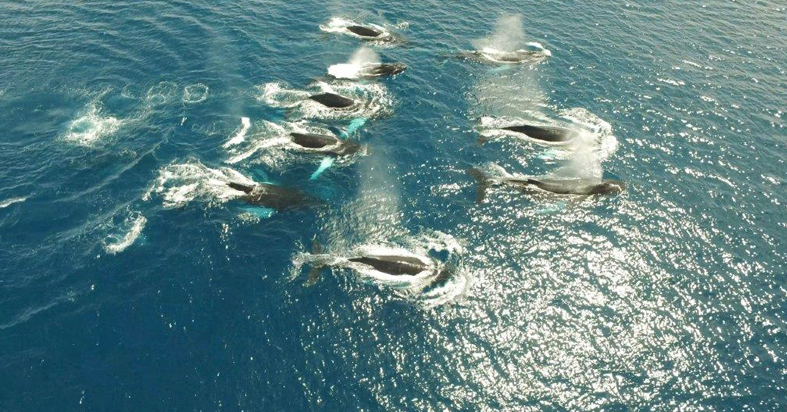
On the entanglement of the whale this season, Mr Stevenson said: “We had a whale with us for two hours. It was covered in sea lice, an indication that it wasn’t well. It couldn’t lift its fluke and didn’t seem able to move it at all and propelled itself using its pectoral fins.
“It surfaced every minute and a half and then sank out of sight. It’s the fourth entangled whale I have encountered in Bermuda. I will now be taking a Government of Canada authorized and sponsored disentanglement course given to Canadians who have worked with whales over many years and in a position to manage a disentanglement.
“I will purchase the necessary specialized equipment needed to safely disentangle a humpback. Going forward, I will have this equipment with me on my boat as I continue my research.”
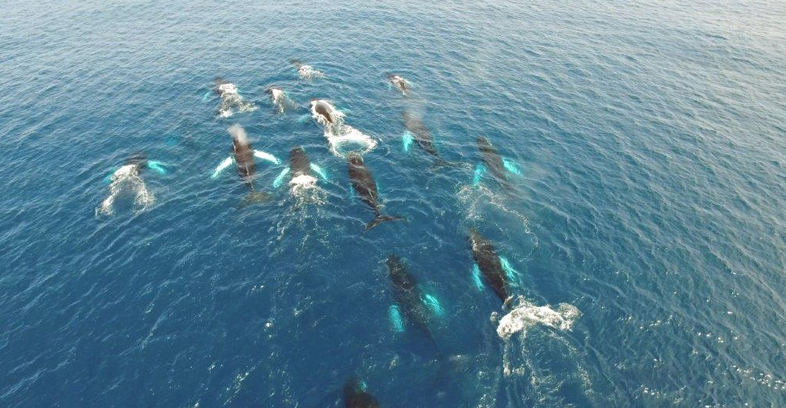
On the whale season this year, he said: “This year was both the worst year for weather and the second best. We had a great summer-like February but with few whales around and then six weeks of storm after storm when it was impossible for me to get out. That was the worst season yet. But then we had seven days of flat calm weather during the peak of the whales’ migration past Bermuda.
“Only once have I had more than seven days of calm weather. As for the whales, there were more sightings than ever, and we pulled in a bumper crop of fluke IDs, well over 200 individual whales identified, of which over thirty were re-sightings.”
Tickets for the May 14 talk at BUEI at 6.30pm and 8.30pm can be obtained from www.ptix.bm


